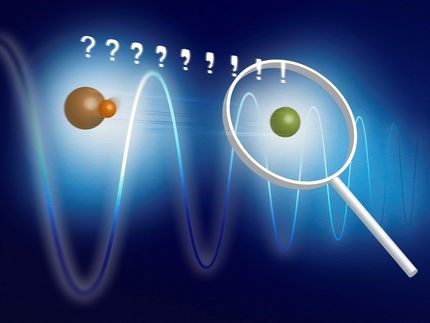Chemical motors: Homing in on the hula twist
The hula twist is no longer an unproven postulate: LMU chemists have now directly shown that a light-sensitive molecule can perform this complex photoreaction. This has inter alia implications for the development of novel molecular machines.
Light-sensitive molecules, which alter their spatial configuration on exposure to light, are at the heart of the visual process in mammals. The latter depends on the conformational isomerization of the visual pigment 11-cis retinal into the all-trans form. This extremely rapid switching is thought to involve a complex rotation known as the hula twist (named after a similar movement of the hip that is characteristic of the Hawaiian dance of the same name). However, whether or not the geometric isomerization of retinal actually takes place in this fashion has been the subject of debate among photochemists for more than 30 years. The answer to this question is also of considerable significance for a whole range of applications, because this specific type of photo-inducible molecular rearrangement may well play a role in synthetic materials, nanosystems, and molecular machines. LMU chemists led by Dr. Henry Dube now report the development of a synthetic compound, which has allowed them, for the first time, to directly demonstrate the occurrence of the postulated hula twist photoreaction. The study appears in the online journal Nature Communications.
“Previous studies have yielded unconvincing and contradictory results, because the light stimulus always triggered a series of processes, making it difficult to distinguish the primary photoreaction from the subsequent steps,” says Dube. He and his colleagues therefore designed and synthesized a specific molecule that can only undergo a restricted subset of photochemical processes on exposure to light. In addition, each individual possible photoreaction is not clouded by thermal follow-up reactions, which allowed the LMU researchers to analyze precisely what happened after light irradiation. The critical region of the test molecule consists of a carbon double bond with an adjacent single bond(C=C-C). Under the influence of light, the molecule can rotate in three different ways, each of which gives rise to a different spatial configuration. The swivel can occur about the double bond or about the single bond alone, but in principle both rotations can also take place at once. The latter possibility corresponds to the hula twist – and the Munich researchers have obtained unequivocal evidence, based on high-resolution spectroscopy, that this complex configurational maneuver can be executed by a real molecule.
It turns out that the choice of isomerization pathway is strongly dependent on the temperature at which the photoreaction takes place. “By raising or reducing the temperature, one can very effectively control which type of rotation is favored,” says Dube. “That is of great interest for a variety of applications, because it allows one to force the molecule along different motion pathways in a targeted manner.”
Dube’s team plans to use the model molecule as a basis for the development of novel light-driven molecular machines. Unlike other light-regulated tools, such as the photoswitchable molecular tweezers that Dube described in a paper also recently published in Nature Communications, molecular motors can execute unidirectional movements. According to the authors of the new study, this extends their potential range of application to include processes like molecule transport and materials processing at the atomic level.
Original publication
Aaron Gerwien, Monika Schildhauer, Stefan Thumser, Peter Mayer, Henry Dube; "Direct Evidence for Hula Twist and Single-Bond Rotation Photoproducts"; Nature Communications; 2018
Other news from the department science
Most read news
More news from our other portals
See the theme worlds for related content
Topic World Spectroscopy
Investigation with spectroscopy gives us unique insights into the composition and structure of materials. From UV-Vis spectroscopy to infrared and Raman spectroscopy to fluorescence and atomic absorption spectroscopy, spectroscopy offers us a wide range of analytical techniques to precisely characterize substances. Immerse yourself in the fascinating world of spectroscopy!

Topic World Spectroscopy
Investigation with spectroscopy gives us unique insights into the composition and structure of materials. From UV-Vis spectroscopy to infrared and Raman spectroscopy to fluorescence and atomic absorption spectroscopy, spectroscopy offers us a wide range of analytical techniques to precisely characterize substances. Immerse yourself in the fascinating world of spectroscopy!































































